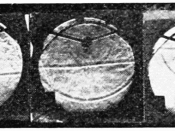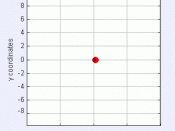Sound waves are created from a source which is vibrating. The vibrating source creates longitudinal waves in some medium which are detected by our ear or by an instrument.
The speed of the sound wave will depend on the medium in which the sound is traveling. Since the approximate speed of sound is given by âÂÂ{ò/ÃÂ}, the speed of sound will increase if the density is decreased, or if the bulk modulus is increased. If sound is traveling in a gas, its speed will depend on the temperature of the gas. For air which is at 0ð C, (32ð F), the speed of sound is 331 m/s. You can determine the approximate speed of sound in air at different temperatures from the equation v â (331 + 0.60T) m/s where T is the temperature in Celsius.
The pitch refers to whether the sound is a high or low note. High frequencies create high pitches and low frequencies produce low pitches.
The human ear can hear frequencies between about 20 Hz and 20,000 Hz. These are audible sounds.
Sound waves with frequencies above 20,000 Hz are called ultrasonic. Dogs can hear sounds up to about 20-50,000 Hz. So a whistle that only dogs can hear has a frequency higher than 20,000 but lower than 50,000 Hz. Sound waves with frequencies below 20 Hz are called infrasonic.
The intensity of the sound wave is a measure of how loud it is. The intensity is given by the power per unit area
I = P/A.
If there is a lot of power over a small area, then the sound wave is very intense. The intensity is given in Watts/meter2. For a sound to appear twice as loud to a human ear requires an intensity which is about 10 times greater. For this reason,


